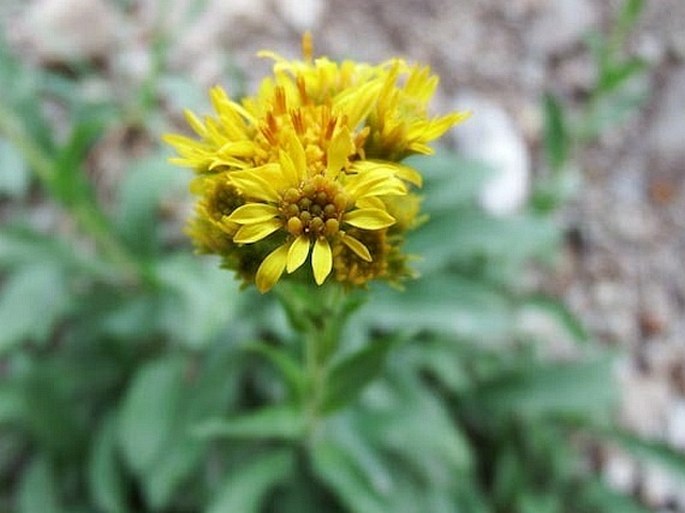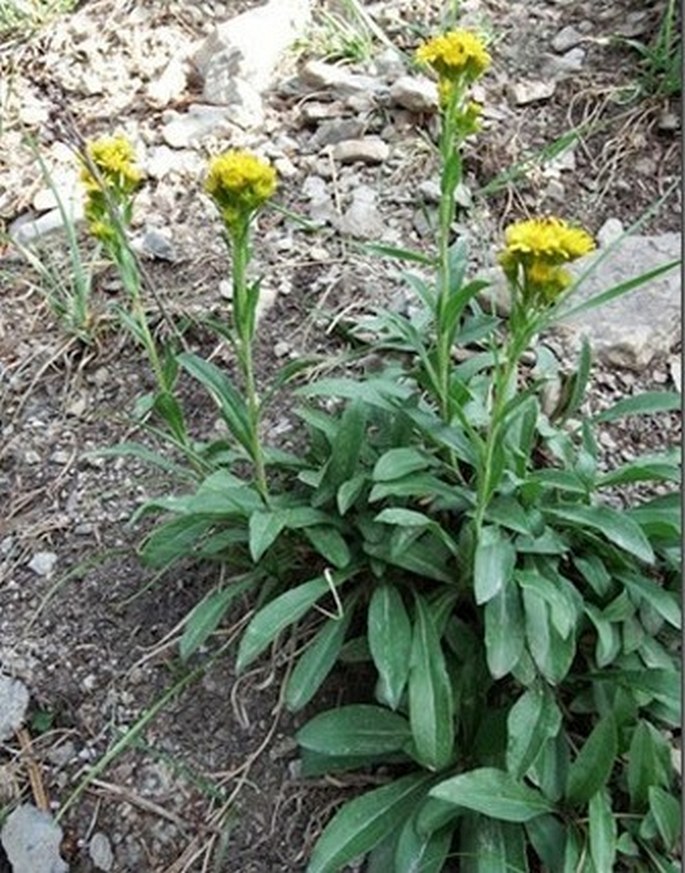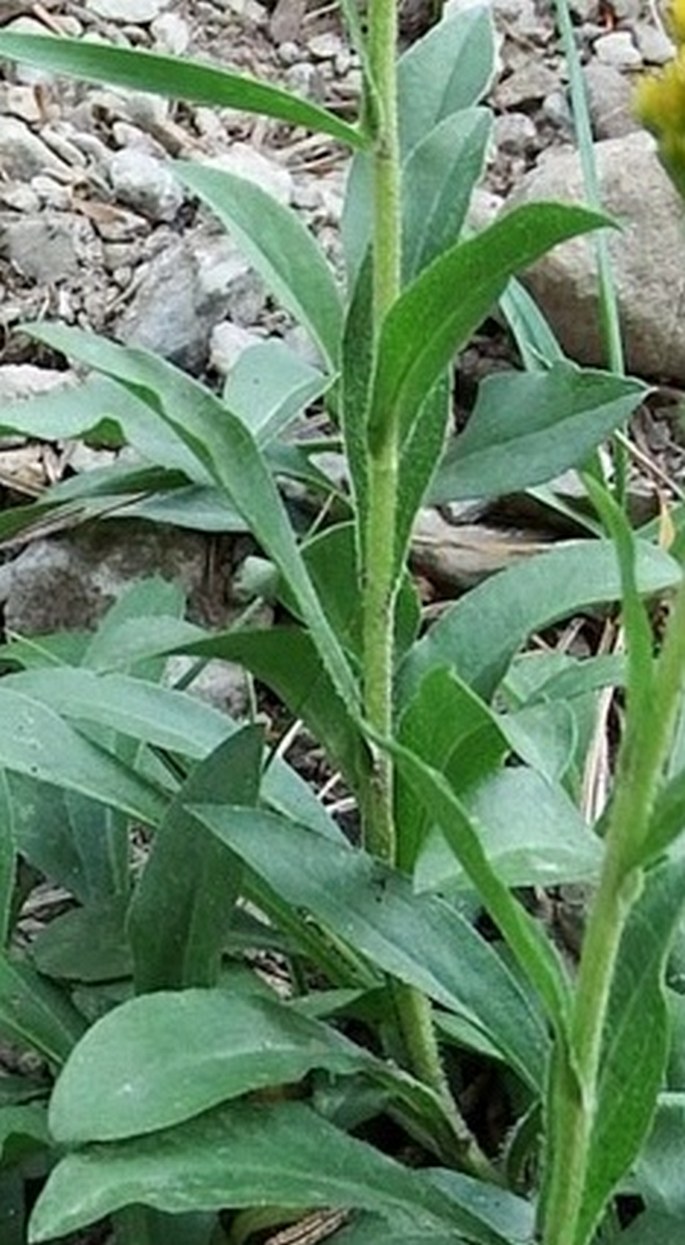Syn.: Aster multiradiatus (Aiton) Kuntze, Solidago virgaurea var. multiradiata (Aiton) Torr. et A. Gray
Family: Asteraceae Bercht. et J. Presl

Distribution: North American species found from Alaska, across whole Canada and western part of US from Montana to New Mexico westward. Also in the state of Maine.
Ecology: Moist to dry, open sites, tundra-like habitats and alpine slopes and meadows. It is found from sea level to 3700 m. Blooms from July to September.

Description: Perennial herb, green to reddish stems, 10–50 cm tall, slightly hairy, from branched bases or short rhizomes. Leaves mainly basal, oblanceolate to spatulate, 2–10 cm long, to 3 cm wide, petiolate, margins sometimes ciliate, fringed with hairs at base; cauline leaves few, smaller, top ones sessile. Inflorescence a corymb of flowerheads, flowerheads yellow, 7–10 mm across, 12–18 ray florets and 10–35 disc florets; involucral bracts lanceolate, 5 mm long. Fruits several-ribbed, round achene, pappus white, hair-like bristles.
Threat and protection: Listed as threatened in the state of Maine.
Note: Native tribes used this plant to brew tea to relieve intestinal gas and cramps which was confirmed by pharmacologists.


These images were taken in Canada, Alberta, Ha Ling Peak (by Karel Bergmann Junior: August 2014).


